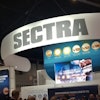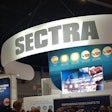
Dr. Michael Forsting, president of the German Radiological Society (DRG) from 2011 to 2013, set out his views on the future of radiology, linking the concept of medical imaging with references to "viable interconnections." On the one side is the doctor freely practicing his or her profession, and on the other side is the infinite potential of interconnected archives. These, I think, are the two poles between which our specialty moves. Here are some more views on this subject.
 Dr. Norbert Hosten became president of the German Radiological Society (Deutsche Röntgengesellschaft, DRG) in June 2013. His term is due to last two years.
Dr. Norbert Hosten became president of the German Radiological Society (Deutsche Röntgengesellschaft, DRG) in June 2013. His term is due to last two years.
The extremely short innovative cycles in our specialty have caused some areas of radiological science to mutate into something which one might provocatively term a "test drive" for the latest models in the equipment industry. Each generation of equipment can do more than its predecessor did, and each generation produces more beautiful images. But to what end? How does the patient benefit? Radiotherapy, as a related specialty, has an easier task here. "Survival" or "duration of recurrence-free survival" is the criteria by which the success of radiotherapy can and must be measured.
Our specialty is caught in a dilemma. Radiology, even interventional radiology, is so closely bound to the entire process of treatment, to the patient's entire case history, that it is difficult to assess the influence of individual radiological procedures in a scientifically honest manner. The indicators of radiation oncology do not apply. That's the first part of the dilemma.
As for the second dilemma, nowadays, developed societies are, as a rule, not prepared to pay more for medical care, and health and health management are perceived as a cost factor, as excessively burdensome items in ancillary labor costs. According to this view, medicine is not about consumption but costs. We all know what that means. Innovation can only be achieved through readjustment or redistribution.
Techniques like PET/CT and PET/MRI are famous examples of innovations that doctors and patients value very highly and which benefit the patients, but that authorities do not reimburse. The main reason: The costs are too high. The argument put forward is that there is no evidence for these methods.
Big Data: A new route to evidence
The classic proof of causality in clinical medicine is the randomized prospective clinical trial, perfected in the English-speaking world and since implemented globally. This is difficult to achieve in radiology for the reasons described above.
Most of our images are available digitally and so are theoretically available globally, but their scientific evaluation is impeded by something that I would call "diffusion." Every department has MRI studies of rare bone tumors, but there is no index that would allow access to all the rare bone tumors that are now archived in our facilities, even though this is exactly what is needed to provide evidence that a contrast-enhanced MRI examination or diffusion-weighted imaging leads to longer indicators of survival than an unenhanced MRI.
Big data shows how. Mammography also does, insofar as it is summarized in the screening. Despite all the difficulties involved in defining with scientific accuracy, the value of this method for patients and healthy women, the patient numbers on which the present publications are based, are absolutely unique. This is not the case with any other indication or modality.
The people whose data we use must give their consent, of course; data protection must be guaranteed and we need ethical approval for each individual trial. Here, we, as medical professionals, rise above commercial factors.
Cooperation is the magic word
The Academy of German Trauma Surgeons has an impressive collection of clinical data on patients who have suffered accidents in Germany. In the past few years, they have started to facilitate the exchange of radiological imaging data. Not all of us have been happy about this. Many of us have technical preferences which we very much want to see implemented. This is of course our right.
This raises one question: Shouldn't we use the opportunities to access this treasure trove of clinical information and imaging data that we actually helped to create? To this end, the DRG has entered into a cooperation agreement with the German Society of Trauma Surgery to allow common scientific access to these riches. This is a rocky path to tread. But wouldn't it be fascinating to conduct a study of 100,000 accident victims to investigate whether the 40,000 people examined with state-of-the-art CT had better survival rates than the 60,000 examined with older machines? Isn't that an objective that makes collaboration with our clinical colleagues worthwhile?
The multiplicity of imaging data will first have to be sifted. Anybody who has prepared 30 examinations for a receiver operating characteristic (ROC) analysis knows how difficult this is to achieve in everyday clinical practice. How should these vast quantities of data be evaluated? Are digital evaluation procedures really the only option?
Here again, the general realities of life in our society offer possible solutions. People are prepared to commit themselves to causes they believe to be worthwhile. Thousands searched the satellite photos of the Indian Ocean available on the Internet -- for free, looking for debris from the missing aircraft MH 307.
The task of perusing radiological images for a single well-defined criterion is no more complex. Our epidemiological colleagues have developed training and quality algorithms. What is to stop us making 100,000 CT images available on the Internet and asking the radiological community to look for polymorphic calcifications, round foci, or "flame signs" on the neck vessels of people who have had accidents? And perhaps we could offer this to our 10,000 reporting workstations in Germany?
Radiology, as a technology-based discipline, has a great opportunity to exploit the potential of new scientific participation in ways which have only been touched upon here. On this note, I look forward to exchanging views about these prospects with you.
Dr. Norbert Hosten is professor of diagnostic and interventional radiology at University Hospital Greifswald.
Editor's note: This article is an edited version of a translation of an interview carried out in German and published online on 21 May by the DRG. Translation by Syntacta Translation & Interpreting.
The comments and observations expressed herein do not necessarily reflect the opinions of AuntMinnieEurope.com, nor should they be construed as an endorsement or admonishment of any particular vendor, analyst, industry consultant, or consulting group.



















